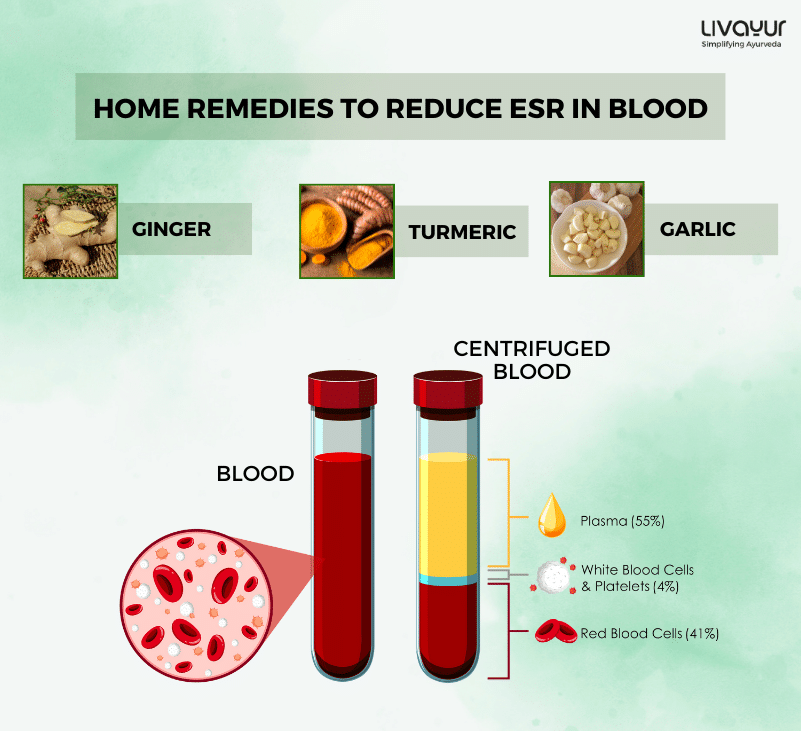
What is ESR?
The erythrocyte sedimentation rate (ESR), also known as sedimentation rate, is a non-specific laboratory test that measures the rate at which red blood cells (RBCs) settle to the bottom of a tube over a period of one hour [1]. ESR blood test is a commonly used test for the diagnosis of inflammatory and infectious diseases. In this article, we will discuss the normal range of ESR, the ESR high symptoms, diagnostic tests used to measure ESR, and the treatment options for high ESR.
Normal Range of ESR
The ESR normal range varies according to age and sex. In general, the normal ESR range for men is between 0-15 mm/hr, and for women, it is between 0-20 mm/hr [2]. However, some factors such as pregnancy, menstruation, anemia, and old age can cause a higher ESR range in women. Additionally, some laboratories may use different reference ranges for ESR, and therefore, it is essential to consult with your healthcare provider to determine your normal ESR range.
Causes of Elevated ESR
Several conditions can cause an ESR high symptoms. The most common causes include infections, inflammation, and autoimmune diseases. Infections such as bacterial, viral, and fungal infections can cause an increase in ESR. Inflammatory conditions such as rheumatoid arthritis, systemic lupus erythematosus, and inflammatory bowel disease can also cause a high ESR. Additionally, some cancers such as multiple myeloma and lymphoma can cause an elevated ESR [3].
Symptoms indicating the need for an ESR blood test
Some key symptoms and situations that might prompt the need for an ESR blood test include the following.
1. Infection
If you exhibit symptoms of infection, like persistent fever or unexplained fatigue, your doctor may order an ESR test. [5]
2. Inflammatory conditions
ESR blood tests are valuable in diagnosing illnesses that induce inflammation, particularly autoimmune diseases like rheumatoid arthritis or inflammatory bowel disease. [5]
3. Cancer
In certain cases, ESR Level in cancer patients can be high, particularly multiple myeloma and lymphomas. [5]
4. Giant cell arteritis
This condition involves inflammation of the blood vessels, primarily affecting the arteries in the head and neck. Symptoms like severe headaches and visual disturbances may lead to an ESR test. [5]
5. Polymyalgia rheumatica
If you are over the age of 50 and experience sudden, severe muscle pain and stiffness, your doctor might order an ESR blood test. [5]
Diagnostic Tests Used to Measure ESR
ESR is a simple laboratory test that can be performed in a clinical laboratory. To perform the test, blood is drawn from a vein in your arm and placed into a tube with an anticoagulant. The tube is then placed upright and allowed to sit for one hour. The distance between the top of the tube and the top of the settled red blood cells is measured in millimeters and recorded as the ESR. The test is not specific to any particular disease, and therefore, other diagnostic tests are usually needed to confirm the underlying cause of an elevated ESR.
Causes behind high ESR blood test results
A high ESR test result, particularly when it exceeds 100 mm/h, is typically a sign of an underlying medical condition. You may also wonder why ESR is high in females? Here are some factors that can contribute to such elevated ESR levels.
1. Inflammatory diseases
Conditions that induce systemic inflammation, like autoimmune diseases, can lead to elevated ESR values. [5]
2. Active infections
Ongoing infections, whether bacterial or viral, can cause the ESR to rise. [5]
3. Cancer
Some cancers, especially lymphomas, can lead to elevated ESR levels. [5]
4. Heart disease
While ESR alone is not a primary diagnostic marker for heart disease, it may be elevated in individuals with underlying cardiac conditions. [5]
5. Kidney disease
Kidney dysfunction can also result in increased ESR levels, as the kidneys play a role in regulating inflammation. [5]
6. Blood disorders
Conditions like anemia, which affect red blood cells, can cause ESR to be higher than normal. [5]
7. Diabetes
Some individuals with poorly managed diabetes may exhibit higher ESR values. [5]
8. Collagen vascular diseases
Conditions like systemic sclerosis or systemic vasculitis, which affect the body’s connective tissues and blood vessels, often lead to elevated ESR. [5]
Treatment Options for High ESR
The treatment for ESR high symptoms depends on the underlying cause. If the elevated ESR is due to an infection, antibiotics or antifungal medications may be prescribed. If the cause is an autoimmune disease, medications such as corticosteroids, nonsteroidal anti-inflammatory drugs (NSAIDs), and disease-modifying antirheumatic drugs (DMARDs) may be used to reduce inflammation and control the immune system [4]. Additionally, lifestyle modifications such as a healthy diet and regular exercise may help to reduce inflammation and lower ESR.
ESR blood test is a widely used laboratory test for the diagnosis of various diseases. The test is non-specific and can be influenced by several factors such as age, sex, and underlying health conditions. The normal range of ESR varies based on age and sex, and therefore, it is crucial to consult with a healthcare provider to determine your normal ESR range. The treatment for high ESR depends on the underlying cause, and lifestyle modifications such as a healthy diet and regular exercise may also help to reduce inflammation and lower ESR.
Treatment following the ESR test results
Here are certain aspects to keep in mind for treatment following an ESR test result.
1. If your doctor detects inflammation based on the ESR test results, they will recommend treatment tailored to the specific condition causing the inflammation.
2. The course of treatment can vary depending on the underlying cause, which could be an infection, autoimmune disease, cancer, or another health issue.
3. It may involve medications, lifestyle changes, or other interventions aimed at managing or reducing inflammation and addressing the root cause of the condition.
Side effects associated with ESR blood test
Here are a few things to know about the side effects that may happen after an ESR test.
1. Side effects directly associated with the ESR test are rare.
2. However, like any medical procedure involving blood collection, there may be minor discomfort or bruising at the site of the blood draw, which can resolve quickly.
FAQs
1. What is the ESR normal range?
The normal range for ESR is typically 0 to 20 mm/hr. [6]
2. What is ESR normal range in males?
The normal ESR range for men is 0 to 15 mm/hr. [6]
3. What is the female ESR normal range?
The normal ESR range for women can vary with age, but it is generally 0 to 20 mm/hr. [6]
4. What is ESR normal range for age groups?
ESR normal ranges can differ slightly depending on age and gender. In men, it is typically 0 to 15 mm/hr, while in women, the normal range is often considered to be 0 to 20 mm/hr. [6]
Conclusion
In conclusion, ESR blood test is an essential laboratory test that can provide valuable information about a patient’s health status. It is a simple and cost-effective test that can be performed in a clinical laboratory. Despite its limitations, ESR remains an important tool in the diagnosis and management of various diseases. Healthcare providers must interpret ESR results carefully, considering the patient’s medical history and other diagnostic tests. By working closely with their healthcare provider, patients can better understand their ESR results and take steps to improve their overall health and well-being.
Disclaimer
The information provided here is not intended to replace professional advice or treatment.

















